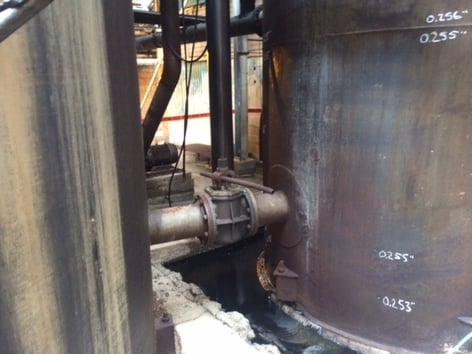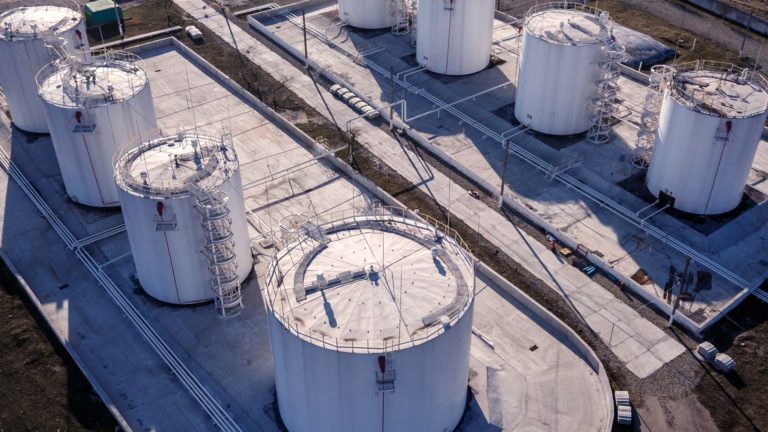Advanced Techniques in Modern Tank Welding Inspection
Advanced Techniques in Modern Tank Welding Inspection
Blog Article
A Comprehensive Introduction of Tank Welding Evaluation Requirements and Methodologies for Improved Weld Quality and Performance
The relevance of welding evaluation requirements in the production of containers can not be overemphasized, as they offer as the foundation for ensuring weld stability and operational dependability. Various inspection techniques, consisting of aesthetic analyses and progressed non-destructive screening approaches, are vital in determining possible imperfections that can jeopardize efficiency.
Relevance of Welding Assessment Specifications

Welding inspection requirements encompass a variety of standards, including product specifications, welding treatments, and credentials of workers associated with the welding process. By implementing these criteria, companies can methodically identify and correct possible issues, thus lowering the probability of expensive repair services or devastating failures. Extensive evaluation techniques foster a society of accountability and precision, motivating welders to keep high degrees of craftsmanship.

Common Welding Evaluation Methods


Ultrasonic Checking (UT) is one more prevalent strategy, using high-frequency sound waves to spot internal imperfections that might not be visible on the surface. This approach is especially effective for determining gaps or additions within the weld metal. Magnetic Particle Examining (MT) is likewise widely made use of, particularly for ferromagnetic materials, as it discloses surface and near-surface defects via the application of magnetic areas and ferrous particles.
In Addition, Liquid Penetrant Screening (PT) finds surface-breaking problems by using a penetrant to the weld and then using a programmer to extract the penetrant. Each of these strategies contributes to a thorough assessment strategy, making certain that welds meet the rigorous high quality criteria needed in container building.
Governing Criteria and Conformity
Regulatory standards and compliance are essential parts in making certain the safety and dependability of bonded structures in storage tank construction - Tank Welding Inspection. These requirements offer to establish minimum demands for product residential or commercial properties, welding treatments, and inspection methods, therefore reducing the danger of architectural failings and enhancing general efficiency
Key organizations, such as the American Society of Mechanical Designers (ASME) and the American Welding Culture (AWS), provide guidelines that are extensively taken on in the industry. Compliance with these requirements not just ensures adherence to best methods however additionally meets legal and contractual responsibilities, guarding the passions of stakeholders.
Regulatory bodies typically mandate adherence to certain codes, such as ASME Code Area IX for welding credentials and API 650 for bonded tanks. These codes outline requirements for welding methods, certifications of workers, and screening approaches to validate weld honesty.
Normal audits and inspections are crucial to maintaining compliance, as they assist identify variances from developed standards. Non-compliance can lead to considerable penalties, task delays, and safety hazards. Thus, a durable understanding of regulatory criteria and a dedication to conformity are extremely moved here important in attaining high-quality and durable bonded container frameworks.
Non-Destructive Checking Techniques
How can the integrity of bonded frameworks be guaranteed without triggering damage? Non-destructive testing (NDT) methods offer a durable option, allowing inspectors to evaluate weld top quality without endangering the material - Tank Welding Inspection. Among one of the most typical NDT methods are ultrasonic testing (UT), radiographic screening (RT), magnetic bit testing (MT), and dye penetrant screening (PT)
Radiographic testing entails passing X-rays or gamma rays through the weld, pop over to this web-site developing images that disclose structural issues such as fractures or voids. This technique is invaluable for examining the integrity of complicated welds.
Magnetic particle testing is matched for ferromagnetic materials, where magnetic areas reveal surface area and near-surface suspensions. Color penetrant screening uses a fluid color to highlight surface-breaking problems, making it an effective technique for non-porous products.
Each of these NDT approaches has unique benefits, enabling extensive analyses tailored to particular products and welding processes. By executing these strategies, industries can guarantee the integrity and safety of welded frameworks, inevitably enhancing general efficiency.
Enhancing Weld Top Quality Through Evaluation
Efficient examination plays an essential function in boosting weld top quality, working as a vital checkpoint in the construction process. By determining potential problems early, assessments minimize the danger of jeopardized architectural honesty and make certain conformity with industry standards. Employing a combination of visual evaluations, non-destructive testing (NDT) techniques, and mechanical evaluations, examiners can discover concerns such as porosity, splits, and insufficient blend.
Applying a durable assessment method not just enhances the general high quality of welds however likewise fosters a culture of accountability among welders and makers. Normal training and certification of evaluation workers guarantee that they are equipped with the necessary abilities to identify and resolve prospective issues efficiently. This proactive approach decreases rework and Check Out Your URL linked expenses, ultimately adding to predict efficiency.
Additionally, extensive documentation of examination searchings for offers valuable understandings right into repeating issues, promoting constant renovation in welding practices. By leveraging innovative modern technologies, such as automated ultrasonic screening or electronic radiography, weld top quality can be improved through much more accurate evaluations. Finally, an extensive inspection procedure is important in achieving top notch welds, guaranteeing safety, dependability, and longevity in container fabrication.
Verdict
In final thought, the application of strenuous tank welding evaluation requirements and techniques is essential for guaranteeing weld stability and efficiency. By making use of a mix of visual evaluations, non-destructive testing techniques, and adherence to governing criteria, companies can properly recognize and mitigate potential problems.
Report this page